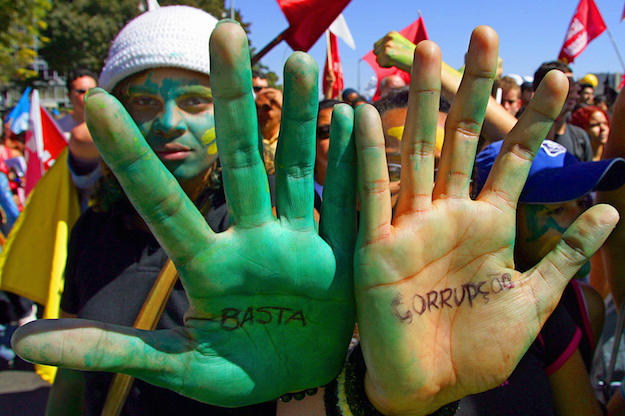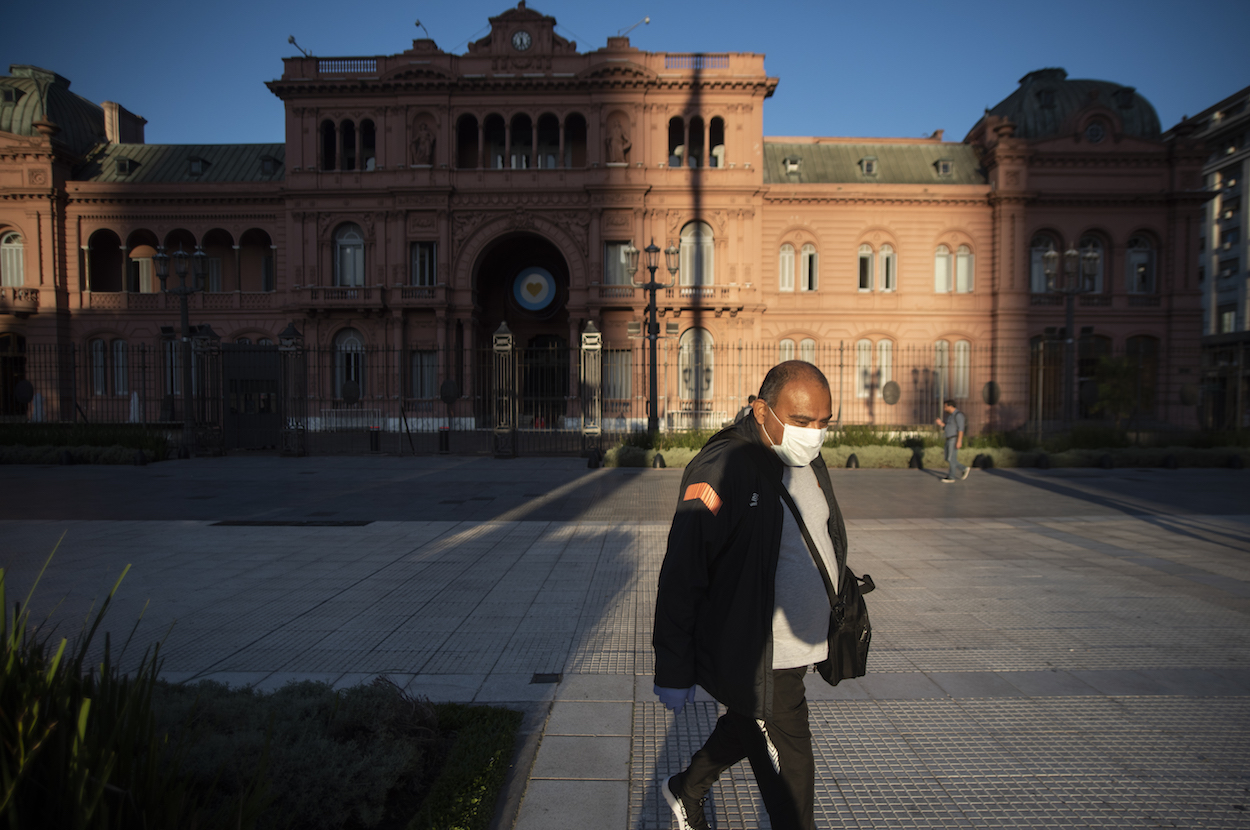By now, everyone knows that restoring trust in government is at the center of Latin America’s political agenda. More than 80 percent of citizens in the region believe their elected officials are corrupt. As the region’s population becomes increasingly urbanized, connected and middle-class, tolerance of the “old ways” of doing politics and business has melted away.
Perhaps less known is that, amid this popular clamor, governments in the region are taking action. Earlier this year, the Summit of the Americas adopted the Lima Commitment, with 57 measures to curb corruption, strengthen democratic governance, and consolidate the rule of law. Simultaneously, the region’s largest private sector actors gathered at the third CEO Summit of the Americas and formulated an Action for Growth to strengthen public-private partnerships for transparency and integrity.
While so-called “grand corruption scandals” grab most of the headlines, government red tape is a silent – but insidious – problem. Cumbersome procedures give ample room for discretion to unscrupulous public officials who accept bribes in exchange for speeding up routine administrative processes. According to Transparency International, 29 percent of Latin Americans who had used six key public services in 2017 – schools, hospitals, identity documents, utilities, police and courts – paid a bribe. This is one in three citizens, and equivalent to an estimated 90 million people in the 20 countries surveyed. The costs of red tape are particularly dire in a region witnessing an economic deceleration and under fiscal stress. Bureaucracy makes it hard for business owners to register their companies, obtain construction permits, and pay taxes. According to the World Economic Forum, bureaucracy, along with corruption, is the biggest concern for entrepreneurs in doing business.
Bribes to expedite procedures constitute a hidden tax that is especially harmful to the poor. In Mexico, while households with an average income spent 14 percent on bribes in 2010, households with the minimum income spent a staggering 33 percent of their monthly income on corruption, according to Transparencia Mexicana, an advocacy organization. Red tape has a pernicious effect on the social contract. Bribes compromise the sense of ethics and respect for law, undermine the social covenant between citizens and the State, and reduce the incentives to pay taxes, creating a vicious cycle of decreased tax revenues and inadequate public services.
What explains this bureaucratic maze?
The Inter-American Development Bank conducted a survey in 18 countries in Latin America to look at the root causes of the bureaucratic maze. Its recent report on bureaucratic red-tape identifies three main causes:
1. Bureaucratic procedures have proliferated at an astonishing rate. There is an astounding number of administrative procedures for transactional services – 4,535 in Peru, 3,757 in Chile, 2,708 in Mexico, and 2,545 in Colombia. On average, a typical citizen in Latin America conducts five transactional services per year and spends an average of 5.4 hours on each. There are significant differences among countries, however, in terms of average time spent per procedure: 11.3 hours in Bolivia, 8.6 in Peru, 7.4 in Colombia, 6.9 in Mexico, and 2.2 in Chile.
2. Bureaucratic procedures are overly complex. Most procedures require more than one interaction with the government agency in charge. In fact, regulatory complexity in the region has a score of 3.5 on a scale of 0 to 5 compared to 1.9 in OECD countries. Only a handful of procedures can be accessed and completed online.
3. Complying with bureaucratic procedures is costly. For example, complying with tax obligations costs small businesses 7.6 percent of their sales revenues. The cost to citizens is even higher as a share of income. In Mexico, for example, the federal and state governments conduct 400 million administrative procedures and spend $9 per procedure on average, shelling out a total of $3.6 billion. If these procedures could be completed online, the cost would fall by 95 percent, saving the equivalent of 25 percent of the federal budget for education.
How to exit the labyrinth?
With numbers shouting out the relationship between bureaucracy and corruption, it is not surprising that deregulation is back on the political agenda of the region. Many incoming governments are introducing bold strategies to spur digital transformation in government, building on a first generation of digital strategies. Three strands of reform are particularly critical to streamlining the state and untangling the bureaucracy: digitalization, simplification, and innovation.
Digitalize: Reducing state bureaucracy begins with putting an end to paperwork and manual processes that are vulnerable to the discretion of unscrupulous public officials. Many countries are promoting online governments, developing integrated digital service portals – such as Mexico, Chile, Uruguay, and more recently Peru. In Chile, for instance, President Sebastián Piñera has pledged to make all administrative procedures accessible through cellphones by 2025 with his Un Chile sin Papeleo (“Paperless Chile”) initiative. Since 2007, Uruguay has had a regulatory body to drive the digital transformation. A decade later, in 2018, Uruguay has joined the Digital 7, a select group of digitally advanced countries.
Simplify: Digitizing government is not enough; it also needs to be simplified. In late 2016, Peru approved an “administrative simplification package.” In the same year, Brazil adopted a digital governance strategy which it fine-tuned in 2018 as part of a strategy to digitally transform the country. Argentina created the Ministry of Modernization to reset the state with the goal of joining the OECD. Since late 2017, the government has undertaken an ambitious plan to streamline bureaucracy, including the introduction of digital identity, electronic official notifications, the principle of administrative silence, the “Mi Argentina” platform and a single window for foreign trade. These measures are expected to generate savings equivalent to 1 percent of GDP.
Innovate: Various countries in the region are leveraging technological innovations and relying on data mining and advanced analytics to redesign complex procedures. In 2013, Ecuador launched the tramiton.to initiative, which received more than 6,000 complaints and led to the simplification of 44 procedures with the help of the citizens. In Peru, the www.dimetutraba.pe initiative of the Ministry of Production helped identify 1,124 barriers to doing business as well as complex procedures. Many national and municipal governments are also setting up innovation labs that use open and big data intelligence to improve public services. In Uruguay, for instance, the Social Innovation Lab of the e-government agency strives to simplify complex procedures to tackle wicked problems, for example related to domestic violence and violence against women.
In Latin America, untangling the bureaucratic maze is an urgent task to boost economic competitiveness and, even more importantly, restore trust in institutions. Bad bureaucracy might be a silent form of corruption, but it paradoxically is the talk of the town.
—
Santiso is the division chief for Innovations in Citizen Services, Inter-American Development Bank (IDB)
Roseth is a modernization of the state specialist at the IDB








